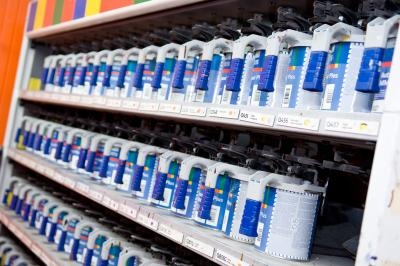
Perfect paintwork can be achieved every time if the correct fluid tip setup has been selected for your spray gun. In the modern age, most vehicle refinishing professionals use high volume, low pressure (HVLP) spray guns. These are precision pieces of equipment that perform at their best when the fluid tip nozzle, needle and air cap are correctly chosen in relation to the type of paint material being used.
Always select an air cap that promotes full atomization of the paint material being used. Choose a size 105 air cap for thinner materials such as water-based paints, transparent sealers and blending thinners that require no more than 29 lbs. per square inch of pressure to achieve an effective paint flow. Select a size 110 air cap for viscous materials such as clear coats that require no more than 32 lbs. per square inch of pressure for application purposes. Remember that size 110 air caps are non-compliant, which means they can be used on non-HVLP spray guns to apply thick materials such as high-build primer.
Choose a fluid tip nozzle by referring to the technical data sheets supplied with your chosen paint material. Opt for small fluid tip nozzles of 0.8 mm to 1.1 mm in size for materials with very low levels of viscosity. This will eliminate excessive material flow that can lead to runs or sags when paint is being applied. Typical paint products such as solvent-based or water-based color will require a 1.2 mm fluid tip nozzle. Only use larger fluid tip nozzles of 1.4 mm or more for highly viscous materials. Never exceed 1.4 mm for clear coats but opt for larger sizes when primers are being applied.
Always select a needle that is compatible with the fluid tip nozzle being used. Failure to do so can result in poor sealing behind the air cap and this can result in the spray gun dripping paint even after the trigger has been released. A standard needle such as the GTI-413 can be used with fluid tip nozzles of up to 1.5 mm in size but anything larger will require a GTI-420 needle. Remember to cross-reference needle sizes based on the make and model of gun you are using.
Always use an air cap and fluid tip combination chart to establish the correct spray gun setup if technical data sheets are unavailable. Carry out a viscosity test by activating the paint with hardener and reducer before timing it as runs through the hole of a viscosity cup. Use the times established to determine the best fluid tip setup and always refinish a test panel before applying the material to a vehicle to ensure flow and atomization are correct.